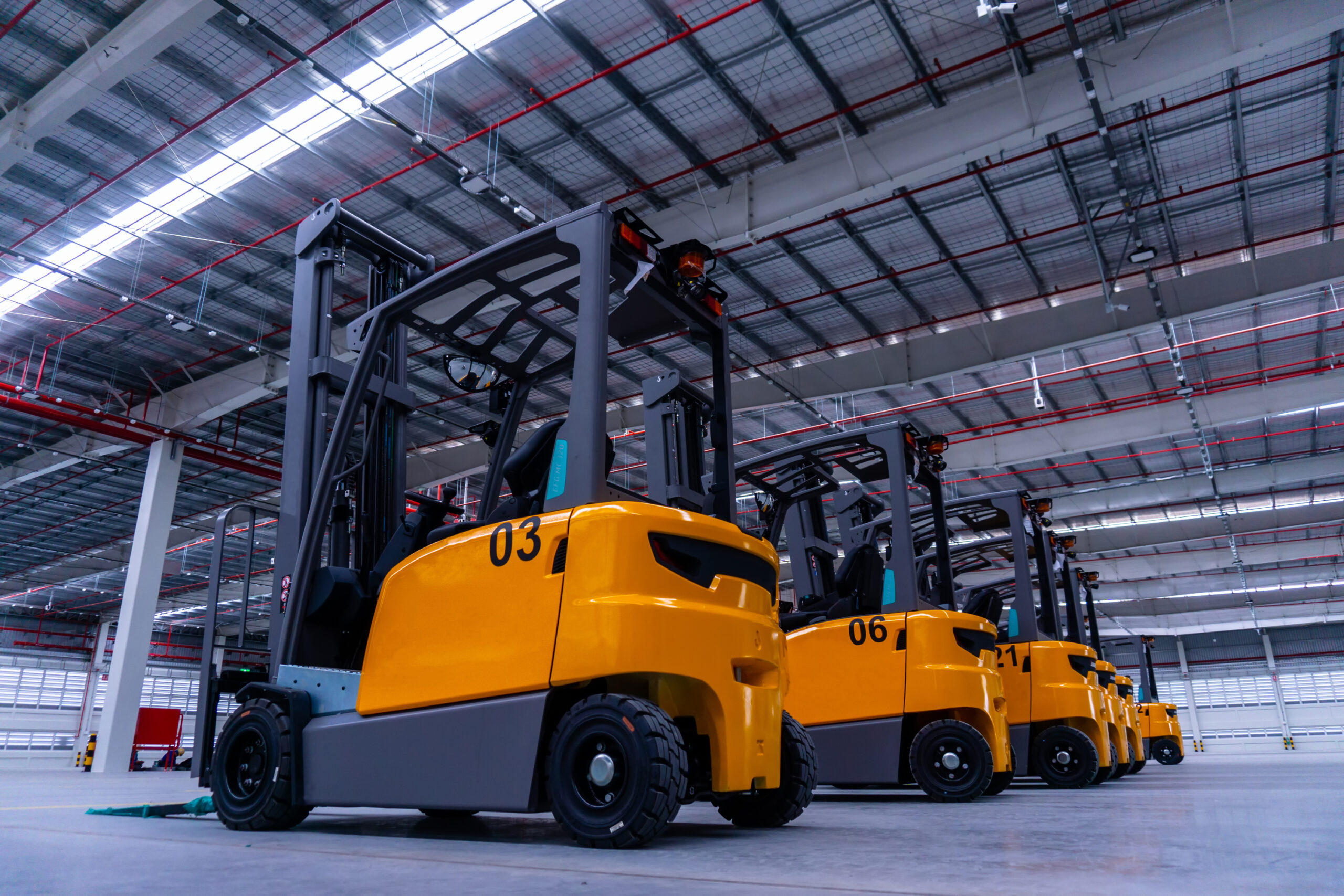Forklifts and other material handling equipment remain essential tools for warehouses, construction sites, and industrial facilities, helping to move goods and heavy loads efficiently. However, without proper safety measures, they can pose significant risks to operators, pedestrians, inventory, and building infrastructure. According to workplace safety statistics, forklift-related accidents result in thousands of injuries and fatalities each year, often due to improper handling, lack of training, or poor maintenance of machinery.
Understanding and implementing forklift safety principles is crucial for minimising hazards and creating a safer work environment. From operator certification and equipment inspections to load management and pedestrian awareness, adhering to best practices not only ensures compliance with safety regulations but also enhances productivity and prevents costly accidents.
Our latest article provides a comprehensive guide, designed to walk you through essential forklift safety protocols, best practices, and proactive strategies and technologies to help you maintain a safe and efficient workplace. Whether you’re a seasoned operator or new to managing a fleet of forklifts, these guidelines aim to reinforce the importance of safety and help prevent avoidable mishaps.
You can navigate our guide to forklift safety by using the links below:
- Understanding Forklift Safety Regulations
- Common Forklift Safety Hazards
- Forklift Safety Solutions
- Forklift Safety Best Practices
Understanding UK and US Forklift Safety Regulations
To mitigate the potential of risk and injuries, strict regulations and safety standards are enforced by UK governing bodies such as the Health and Safety Executive (HSE). Under UK law, forklift operations must comply with several key regulations, including:
- The Provision and Use of Work Equipment Regulations (PUWER) 1998
- The Lifting Operations and Lifting Equipment Regulations (LOLER) 1998
- The Management of Health and Safety at Work Regulations 1999
- The Health and Safety at Work Act 1992
- Workplace (Health, Safety and Welfare) Regulations 1992
Additionally, the US is governed by the Occupational Safety and Health Administration (OSHA) which provides a comprehensive set of regulations and processes to ensure compliance. Understanding and adhering to each of these regulations is essential for businesses to remain compliant, protect workers, and prevent costly accidents. This comprehensive guide will outline best practices, legal obligations, and safety measures to ensure responsible and efficient forklift use in the workplace. Whether you’re an employer, operator, or safety manager, these principles will help you maintain a secure and compliant working environment.
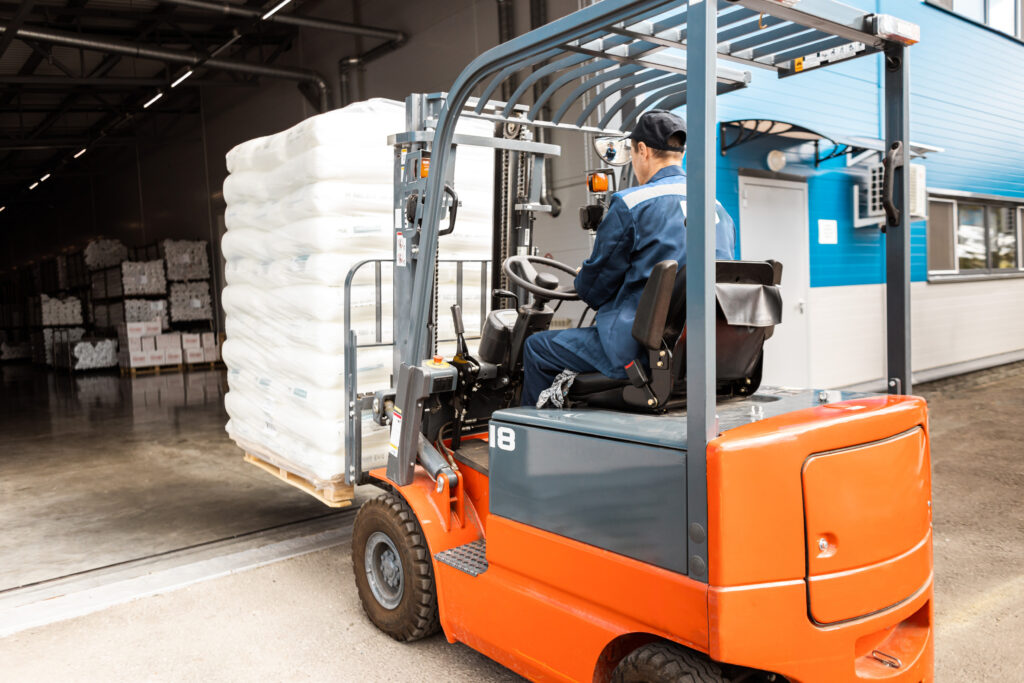
Health and Safety Executive (HSE)
The Health and Safety Executive (HSE) is the primary enforcement agency responsible for monitoring and investigating any breaches of workplace safety. Below are the key UK regulations governing forklift safety, along with their primary duties and enforcement powers:
The Health and Safety at Work Act 1974 (HSWA)
The HSWA is the overarching legislation for workplace safety in the UK. It places a general duty on employers to ensure the health, safety, and welfare of their employees and anyone affected by their operations, including forklift use. This includes providing proper training, risk assessments, and a safe working environment. Employees also have a duty to follow safety procedures and use equipment correctly.
Enforcement Powers: The HSE has the authority to inspect workplaces, issue improvement and prohibition notices, and prosecute companies or individuals who fail to comply. Non-compliance can result in hefty fines or even imprisonment for serious breaches.
The Provision and Use of Work Equipment Regulations (PUWER) 1998
PUWER ensures that all work equipment, including forklifts, is suitable for its intended use, properly maintained, and operated by trained personnel. Employers must ensure forklifts are regularly inspected and safe to use, and that operators have adequate training.
Enforcement Powers: The HSE and local authorities can conduct workplace inspections to ensure compliance. They can issue enforcement notices requiring remedial action and take legal action if unsafe practices are identified.
The Lifting Operations and Lifting Equipment Regulations (LOLER) 1998
LOLER specifically governs lifting equipment, including forklifts. It requires that forklifts must be regularly examined by a trained and competent person. Lifting accessories (such as forks and chains) must also be inspected and maintained to prevent failures.
Enforcement Powers: HSE inspectors can request records of equipment inspections, issue improvement or prohibition notices, and prosecute companies that fail to conduct the required examinations, leading to potential fines or legal action.
The Management of Health and Safety at Work Regulations 1999
These regulations set out requirements for employers to assess workplace risks, including those associated with forklift operations, and take appropriate preventive measures where necessary. Employers must conduct risk assessments, implement control measures, and provide information and training to employees.
Enforcement Powers: The HSE and local authorities can request risk assessments, conduct inspections, and take enforcement action against businesses failing to manage forklift safety effectively.
Workplace (Health, Safety and Welfare) Regulations 1992
This regulation ensures that workplaces are designed and maintained to promote safety. This can include clear pedestrian pathways, designated routes for forklifts, and the installation of adequate lighting. Employers must ensure that the working environment minimises hazards for both forklift operators and pedestrians.
Enforcement Powers: Inspectors can require changes to workplace layouts or issue penalties if unsafe conditions contribute to forklift-related incidents.
OSHA Regulations for Forklift Safety (United States)
In the United States, forklift safety is governed by the Occupational Safety and Health Administration (OSHA). Key OSHA forklift safety requirements state that operators must complete formal training and certification, including classroom instruction and hands-on evaluation, while employers must ensure that forklifts are regularly inspected and maintained according to manufacturer guidelines. OSHA regulations also cover safe operating practices that must be followed, including speed limits, pedestrian awareness, and load stability, alongside safety features that forklifts must be equipped with, such as seat belts, horns, and warning lights. Workplaces must also be designed to accommodate forklift activities, including designated pathways, signage, and hazard controls.
Enforcement Powers: OSHA enforces these regulations through workplace inspections, and violations can result in fines or penalties. Employers in both the UK and US must prioritize forklift safety to comply with regulations and ensure a safe working environment.
Summarising Forklift Safety Regulations
Understanding and complying with these regulations is essential for maintaining a safe working environment and avoiding costly accidents or potential legal consequences. By conducting comprehensive operator training, implementing regular equipment inspections, and maintaining safe working conditions, employers will ensure that forklift operations abide by the legal requirements and standards set out to mitigate risk.
Common Forklift Safety Hazards
Even with strict regulations and processes in place, forklifts still pose a potential hazard in the workplace. Being aware of these risks will help businesses implement the appropriate safety measures throughout their facility, designed to safeguard people, equipment, inventory, and building infrastructure. Here we have identified some of the most common forklift safety hazards:
- Pedestrian Accidents: Collisions between forklifts and pedestrians can result in serious injuries or fatalities. Clear designated walkways, protective barriers, speed controls, and warning systems help mitigate this risk.
- Tip-Overs: Overloading, uneven weight distribution, excessive speed, and uneven ground can cause forklifts to tip over, endangering operators and nearby workers. Thorough training and load management are critical.
- Speeding: Operating a forklift at excessive speeds reduces the driver’s reaction time and increases the likelihood of losing control, leading to accidents. Forklift speed limits should be enforced particularly in areas with manual workers.
- Blind Spots: Forklift operators often have restricted visibility due to the mast or loads blocking their view. Mirrors, cameras, and spotters help improve situational awareness.
- Improper Maintenance: Failing to inspect and maintain forklifts can lead to mechanical failures, such as brake malfunctions or hydraulic issues, increasing the risk of accidents. Regular servicing is essential to ensure forklifts are operationally sound.
- Load Risks: Carrying unstable, oversized, or poorly secured loads can lead to load shifts, falling materials, or tipping hazards. Operators should always follow the forklift manufacturer’s load capacity guidelines.
- Uneven Terrain: Operating forklifts on ramps, inclines, or rough surfaces increases the risk of tipping or losing control. Worksites should have level, well-maintained surfaces and use the most appropriate forklift or material handling equipment for the required operation.
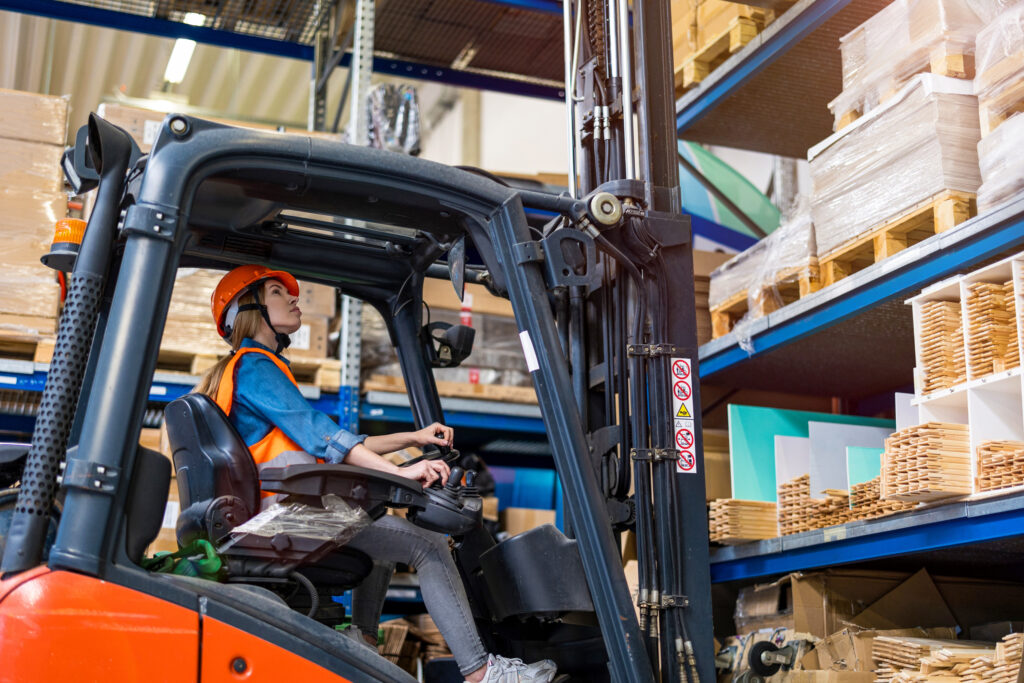
Forklift Safety Solutions
With expertise spanning over three decades, Transmon Engineering offers a comprehensive range of bespoke forklift safety solutions designed to enhance operational safety and efficiency. Below is an overview of key products and how each promotes forklift safety:
- Active Collision Avoidance System (ACAS) – ACAS utilises advanced sensor technology to detect obstacles in the forklift’s path, providing real-time alerts to operators. This system helps prevent collisions, protecting both personnel and inventory.
- Proximity Warning Systems – These systems alert operators when pedestrians or other forklifts are in close proximity, enhancing situational awareness and preventing collisions.
- Speed Control Solutions – Transmon’s speed control systems enforce site-specific speed limits for forklifts. By regulating vehicle speed, these solutions help prevent accidents caused by excessive speed, especially in areas with high pedestrian traffic.
- Active Reverse System – The active reverse system provides audible and visual warnings when a forklift is reversing, alerting nearby pedestrians and reducing the risk of reverse-related accidents.
- Access Control Solutions – Transmon’s access control systems, including entry-level pin code keypads, ensure that only authorised personnel can operate forklifts. This reduces the risk of accidents caused by untrained or unauthorised users.
- Forklift Camera Systems – Camera driver aids enhance operator visibility, especially in areas with limited sightlines. By providing clear views of the surroundings, these systems help operators navigate safely, reducing the likelihood of accidents.
- Forklift Warning Lights – Warning lights offer effective visual alerts to pedestrians and other operators in the vicinity of a moving forklift. These lights increase site safety by making forklifts more noticeable, thereby preventing potential collisions. (pictured below)
- Forklift Fleet Management Systems – Transmon provides fleet management solutions that monitor and manage forklift usage. These systems track performance metrics, maintenance schedules, and operator behaviour, promoting safer and more efficient operations.
- Sequential Seat Belt System – Ensuring that operators wear seat belts properly, this system requires the seat belt to be fastened in a specific sequence before the forklift can be operated, promoting operator safety.
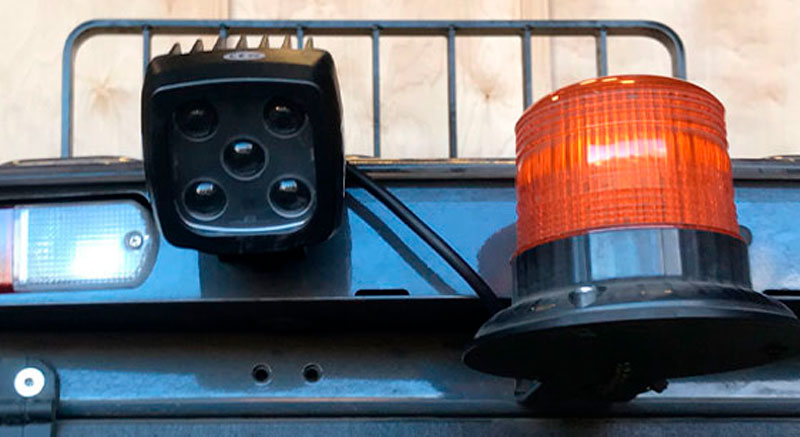
Forklift Safety Best Practices
Ensuring forklift safety goes beyond regulatory compliance, it requires a long-term commitment to best practices that protect operators, pedestrians, and workplace assets. By implementing comprehensive safety measures, businesses can reduce the likelihood of accidents, improve operational efficiency, and create a safer working environment. Below are the key best practices for forklift safety and their importance in preventing incidents.
1. Operator Training & Certification
Comprehensive training is the foundation of forklift safety. The UK’s Health and Safety Executive (HSE) mandates that all forklift operators must receive accredited training and certification before being authorised to use a forklift.
- Training should cover operational controls, load handling, workplace hazards, and emergency procedures.
- Operators must pass both theory-based assessments and practical driving evaluations to receive certification.
- Employers should provide regular refresher courses to ensure operators remain competent and up-to-date with safety regulations.
- Approved training providers should conduct the training, such as those accredited by the Road Transport Industry Training Board (RTITB), Independent Training Standards Scheme & Register (ITSSAR), Association of Industrial Truck Trainers (AITT), or National Plant Operators Registration Scheme (NPORS).
2. Pre-Operational Inspections
Before using a forklift, operators must conduct a pre-use safety inspection to identify potential mechanical issues. Employers must implement daily checklists and require operators to report any faults before using the equipment. Key checks include:
- Brakes, steering, and tyres – ensure they function correctly and are in good condition.
- Hydraulics and lifting mechanisms – check for leaks, wear, or operational failures.
- Lights, horns, and alarms – verify that warning devices work properly.
- Seatbelts and safety restraints – ensure they are secure and operational.
3. Load Handling & Stability
Improper load handling is a major cause of forklift accidents, including tip-overs and falling loads. Safe load management includes:
- Never exceeding the forklift’s maximum load capacity.
- Keeping loads low and tilted back to maintain stability.
- Ensuring loads are evenly distributed and properly secured before moving.
- Avoiding sudden stops or sharp turns when carrying heavy loads.
- Using appropriate attachments, such as clamps or extensions, for irregularly shaped loads.
4. Safe Driving Practices
Forklifts should be operated with caution, as their weight and ability to manoeuvre differ greatly from other vehicles. Operators should:
- Always wear a seatbelt and remain seated while operating the forklift.
- Maintain a safe speed and slow down when turning or navigating tight spaces.
- Use the horn at intersections and blind spots to alert pedestrians.
- Keep a clear view of their route.
- Maintain a safe stopping distance from people and other vehicles.
5. Pedestrian Safety & Awareness
Collisions between forklifts and pedestrians are a serious workplace hazard. To avoid any potential collision, businesses should implement pedestrian safety measures, such as:
- Designated pedestrian walkways that are clearly marked and separate from forklift routes.
- Warning signs, mirrors, and barriers to improve visibility and prevent collisions.
- High-visibility clothing for workers in forklift zones to enhance visibility.
- Operators should always give way to pedestrians.
6. Correct Parking & Shutdown Procedures
A forklift should always be safely parked and secured when not in use. Operators must:
- Lower the forks completely and apply the parking brake.
- Turn off the ignition and remove the key to prevent unauthorised use.
- Park in designated areas, away from emergency exits, pedestrians, or high-traffic zones.
7. Environmental Awareness & Terrain Safety
Operating a forklift in different environments presents unique challenges. Best practices include:
- Indoor environments: Ensure proper ventilation when using fuel-powered forklifts to prevent carbon monoxide build-up.
- Outdoor environments: Avoid operating on uneven or sloped surfaces that could cause tipping.
- Warehouse settings: Keep aisles clear of obstacles and ensure proper lighting for visibility.
8. Regular Maintenance & Servicing
Routine maintenance is essential to keeping forklifts in safe working condition. Employers should:
- Maintain the forklift in accordance with the manufacturer’s guidelines
- Schedule regular servicing and inspections by qualified technicians.
- Replace worn-out parts and tyres to prevent mechanical failures.
- Keep detailed records of all maintenance and repairs to ensure compliance with LOLER and PUWER regulations.
9. Continuous Improvement
Forklift safety should always be viewed as an ongoing process that requires regular review and enhancements. Businesses should develop a culture of comprehensive health & safety policies and continuous improvement by:
- Conducting regular safety audits to identify areas for improvement.
- Encouraging employee feedback on forklift safety concerns and potential hazards.
- Reviewing accident reports and near-miss incidents to implement preventative measures.
- Investing in new safety technologies, such as collision avoidance systems, warning lights, and telematics.
- Updating training programs as regulations evolve and new risks emerge.
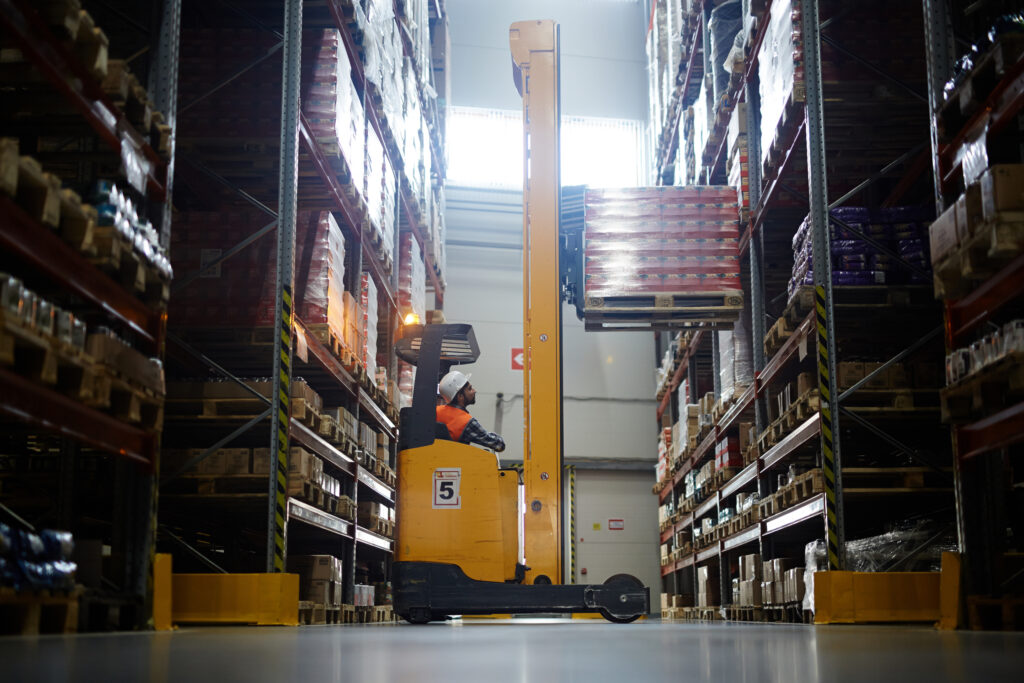
Conclusion
By following these forklift safety best practices, businesses can significantly reduce workplace accidents and improve overall operational efficiency. A proactive approach to training, maintenance, and safe operations not only ensures compliance with UK safety regulations, it supports a long-term commitment to workplace safety.
Transmon Engineering works with a diverse customer base supporting forklift operations in warehouses, distribution centres, depots, ports, construction sites, and bulk material yards. With a passion and dedication to well-being, safety, and efficiency, our team of experts remains committed to designing and integrating bespoke solutions that safeguard forklift drivers, workers, inventory, and building infrastructure. With 30 years of experience behind us, we provide intelligent technology solutions that support safety and productivity in equal measure.
To find out how Transmon can help you achieve enhanced forklift safety and operational efficiency, contact one of our experts today.
To find out how Transmon can help you achieve enhanced forklift safety and operational efficiency, contact one of our experts today by calling 0116 260 4200.


